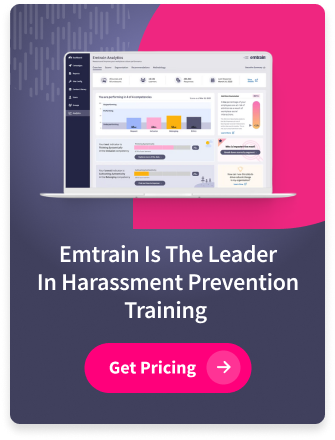Workplace harassment remains a critical issue for organizations striving to build respectful and inclusive cultures. To tackle it effectively, it’s crucial to understand the legal and practical implications of ‘severe & pervasive‘ harassment behavior. These terms serve as a standard for determining whether workplace conduct crosses the line into unlawful harassment. This blog will explore the concept of severe & pervasive harassment, how to recognize it, and practical steps to address it proactively.
What Does Severe & Pervasive Mean?
Under employment law, harassment becomes unlawful when it creates a hostile work environment, which is determined by whether the behavior is severe & pervasive. These terms have specific meanings:
- Severe: This refers to the intensity of the behavior. A single act, such as a physical assault or an explicit racial slur, can be considered severe enough to constitute harassment.
- Pervasive: This indicates that the behavior is widespread or occurs repeatedly over time, creating an ongoing hostile environment. Examples include recurring derogatory comments, inappropriate jokes, or persistent exclusionary behavior.
Not every uncomfortable situation or one-off comment meets this standard. However, understanding these thresholds helps employees and managers identify when workplace behavior becomes unacceptable.
Recognizing Severe & Pervasive Harassment
Identifying severe & pervasive harassment requires awareness of both individual incidents and patterns of behavior. Here are key indicators:
- Frequent or Persistent Behavior: Does the conduct happen repeatedly? For example, ongoing belittlement or offensive remarks directed at an employee may create a pervasive environment of hostility.
- Impact on the Work Environment: Does the behavior interfere with an employee’s ability to perform their job or feel safe at work?
- Intensity of the Incident: Even a single incident may qualify if it involves physical harm, threats, or deeply offensive language.
- Context and Power Dynamics: Consider whether the behavior is compounded by factors like power imbalances, such as between a supervisor and an employee.
Examples
- Severe but Isolated: A manager makes an inappropriate physical advance toward an employee during a company event.
- Pervasive but Less Severe: A team member frequently uses belittling language toward a colleague in meetings, undermining their confidence and status over time.
- Both Severe & Pervasive: A group of employees repeatedly excludes a coworker from key meetings while making derogatory remarks about their ethnicity.
Addressing Severe & Pervasive Harassment
Proactively addressing severe & pervasive harassment requires a clear organizational framework:
- Establish Clear Policies: Your workplace policy should define harassment, outline examples of severe & pervasive behavior, and provide clear steps for reporting.
- Offer Training and Education: Training programs help employees and managers recognize what constitutes harassment and how to respond effectively.
- Create Safe Reporting Channels: Employees should feel comfortable reporting incidents without fear of retaliation. Anonymous reporting tools can be especially helpful.
- Investigate and Take Action: Employers must promptly investigate claims and take appropriate corrective action when necessary.
- Promote a Respectful Culture: Prevention is the best strategy. Encourage open communication, inclusivity, and accountability at all levels.
The Role of Bystanders and Managers
Bystanders and managers play a pivotal role in addressing severe & pervasive harassment. Managers, in particular, have a duty to model respectful behavior, respond to complaints appropriately, and monitor workplace dynamics to prevent escalation. Bystanders should feel empowered to speak up when they witness harmful conduct.
Building a Culture of Zero Tolerance
Understanding the standard of severe & pervasive harassment is just the beginning. Organizations must foster a culture where any behavior that undermines respect and inclusivity is unacceptable—whether or not it meets the legal definition of harassment. By focusing on education, accountability, and ongoing dialogue, workplaces can build environments where everyone feels safe and valued.
Remember: Addressing severe & pervasive harassment isn’t just about compliance; it’s about creating a workplace where everyone thrives.
Related Blogs to Read:
Quid Pro Quo Harassment: Prevention and Training for the Workplace
Hostile Work Environments: How Organizations Can Recognize and Prevent Risk
Supporting LGBTQ+ Employees: Policies and Practices for Inclusion
Office Romance and Conflicts of Interest: Policies That Protect Your Workplace
Workplace Harassment: Addressing Unwelcome Conduct Through Training
Manager’s Duty to Report: Train Managers on Reporting Responsibilities
Off-Duty Conduct: Legal and Ethical Considerations for Employers








